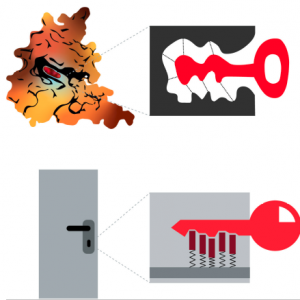Human beings suffer from many diseases, some of which can be cured with existing drugs and medicine, and others which unfortunately cannot. Regrettably, some drugs that are already used to treat certain diseases can be inefficient and have unpleasant side effects. It is thus no surprise that drug discovery is a very active field of research for both academia and the pharmaceutical industry.
Designing a novel drug is a complex and multidisciplinary problem. It can take more than ten years of study, experimentation, and testing to deliver new a drug to the market. (Super)computers play a more and more important role in this process. They have proven to be capable of significantly narrowing the number of potential drug candidates, thus saving huge amount of time and cost in trial-and-error synthesis and testing. We say “narrowing” instead of identifying the best candidate, because computers alone (for the foreseeable future) cannot capture the full complexity of drug interactions in the human body. A drug candidate must not only be efficient in treatment of the targeted disease, but also has to have as few side effects as possible, be chemically and metabolically stable, be non-toxic (including its metabolites), and must have many other favourable properties, such as solubility, capability of transferring through cell membranes, etc.

A typical drug design process targeting a certain disease follows these steps: first, the so-called biological target must be identified. A biological target is typically a protein receptor, an enzyme, or a nucleic acid that plays a crucial role in the disease or survival of a pathogen in the body. A drug, often called a ligand, is typically a small organic molecule that is capable of binding to the biological target (through a so-called key & lock mechanism). Upon (reversible or irreversible) binding of the ligand, the biological target’s function is altered. This can include enzyme inhibition by binding to the active site, blocking or activating protein receptors, or impacting an ion channel.
The main role of computers in drug discovery is to quantitatively describe the binding of ligands to targets. The range of computational methods used is very broad, varying in the amount of empiricism (i.e. lacking rigorous theoretical background in physics or chemistry) and throughput. The accuracy of a method and its throughput is unfortunately inversely proportional.
Fast, but empirical screening methods are used for checking huge databases of known chemical compounds, or molecules which can be easily synthesized from them. These methods are either based on empirical formulas, or more sophisticated machine learning methods/neural networks, trained on existing data. On the other hand, the most sophisticated approaches are based on solid theoretical roots: quantum chemistry and statistical thermodynamics. They tests the limits of what is currently possible with supercomputers, but once supercomputers are powerful enough, a whole new era of drug design will begin.

